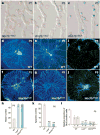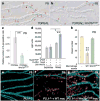WNT7b mediates macrophage-induced programmed cell death in patterning of the vasculature
- PMID: 16163358
- PMCID: PMC4259146
- DOI: 10.1038/nature03928
WNT7b mediates macrophage-induced programmed cell death in patterning of the vasculature
Abstract
Macrophages have a critical role in inflammatory and immune responses through their ability to recognize and engulf apoptotic cells. Here we show that macrophages initiate a cell-death programme in target cells by activating the canonical WNT pathway. We show in mice that macrophage WNT7b is a short-range paracrine signal required for WNT-pathway responses and programmed cell death in the vascular endothelial cells of the temporary hyaloid vessels of the developing eye. These findings indicate that macrophages can use WNT ligands to influence cell-fate decisions--including cell death--in adjacent cells, and raise the possibility that they do so in many different cellular contexts.
Conflict of interest statement
The authors declare no competing financial interests.
Figures




References
-
- Savill J, Dransfield I, Gregory C, Haslett C. A blast from the past: clearance of apoptotic cells regulates immune responses. Nature Rev Immunol. 2002;2:965–975. - PubMed
-
- Lang RA, Bishop MJ. Macrophages are required for cell death and tissue remodeling in the developing mouse eye. Cell. 1993;74:453–462. - PubMed
-
- Diez-Roux G, Lang RA. Macrophages induce apoptosis in normal cells in vivo. Development. 1997;124:3633–3638. - PubMed
-
- Hoeppner DJ, Hengartner MO, Schnabel R. Engulfment genes cooperate with ced-3 to promote cell death in Caenorhabditis elegans. Nature. 2001;412:202–206. - PubMed
-
- Reddien PW, Cameron S, Horvitz HR. Phagocytosis promotes programmed cell death in C. elegans. Nature. 2001;412:198–202. - PubMed
Publication types
MeSH terms
Substances
Grants and funding
LinkOut - more resources
Full Text Sources
Other Literature Sources
Molecular Biology Databases

